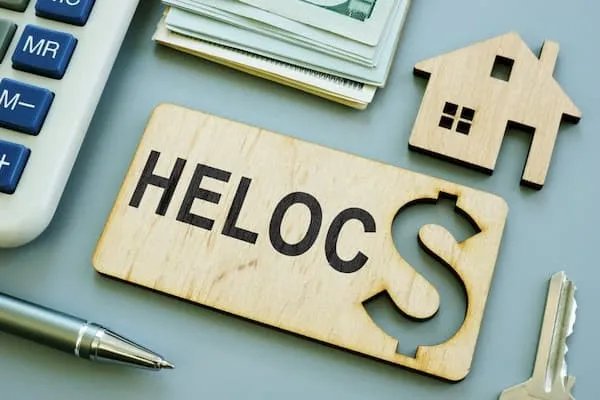
When it comes to managing home expenses, homeowners often look for financial tools such as free personal loans online that offer both flexibility and savings. A home equity line of credit (HELOC) is one such tool that can provide you with the funds you need, while also offering some attractive tax benefits. But, like many aspects of personal finance, the details matter. Let’s take a closer look at how a HELOC works, and more importantly, how you can take advantage of the tax benefits it offers.
Understanding HELOCs: More Than Just a Loan
A HELOC is essentially a revolving line of credit secured by the equity in your home. Unlike a traditional loan where you receive a lump sum of money, a HELOC allows you to borrow what you need, when you need it, up to a certain limit. This makes it an incredibly flexible option for homeowners who want to manage cash flow for home improvements, emergency repairs, or even large purchases.
One of the main reasons people turn to HELOCs is the potential tax deduction on the interest paid. But there’s a catch—you can only deduct the interest if the money is used to buy, build, or improve your home. This is where many people go wrong, assuming that because it’s a loan secured by your home, the interest is always deductible. Understanding this nuance is key to maximizing your tax savings.
In the world of financing, Free Personal Loans Online might sound appealing, but they don’t offer the same tax benefits as a HELOC. If you’re looking to make improvements to your home and want to save on your taxes, a HELOC could be the smarter choice.
HELOC Interest Deduction: What You Need to Know
The IRS allows you to deduct interest on a HELOC, but only if you meet specific conditions. First, you must use the money for home-related expenses—buying, building, or improving your primary or secondary residence. This means that if you’re using your HELOC to fund a vacation or pay off credit card debt, you won’t be able to deduct the interest on your taxes.
Second, you need to itemize your deductions on your tax return. This is an important point because, with the increased standard deduction in recent years, fewer people are itemizing. If you don’t itemize, you can’t claim the HELOC interest deduction.
For those who do itemize, the tax savings can be significant. By reducing your taxable income, you effectively lower your tax bill, making the cost of borrowing more affordable. This is one of the less commonly highlighted benefits of using a HELOC for home improvement projects. While many people focus on the flexibility and lower interest rates compared to personal loans or credit cards, the tax deduction can add up, especially over the life of the line of credit.
Using a HELOC Strategically
To get the most out of your HELOC, it’s important to use it strategically. Since the tax benefits only apply to funds used for home-related purposes, plan your borrowing with this in mind. For example, if you’re planning a major renovation, using a HELOC can not only help you manage the costs over time but also reduce your overall tax burden.
It’s also worth considering the timing of your borrowing. Interest rates on HELOCs can fluctuate, so borrowing during a period of lower rates can save you money in the long run. And since the interest is only deductible in the year it’s paid, you might want to structure your payments to maximize your tax benefits in a particular year.
Another strategic approach is to use your HELOC to pay off higher-interest debt that isn’t tax-deductible, such as credit card balances. However, keep in mind that while this can save you money on interest, the portion of your HELOC used for debt consolidation won’t be eligible for the tax deduction.
HELOCs vs. Other Financing Options
When considering a HELOC, it’s important to weigh it against other financing options. While personal loans and credit cards offer quick access to cash, they typically come with higher interest rates and no tax benefits. Free Personal Loans Online might catch your eye, but the interest on these loans is not tax-deductible, making them less attractive for large home improvement projects.
On the other hand, a HELOC can offer both lower interest rates and potential tax savings. This makes it a strong contender for anyone looking to finance home-related expenses. Additionally, the revolving nature of a HELOC means you only pay interest on the amount you actually borrow, which can be a more cost-effective option compared to a lump sum loan.
However, it’s essential to remember that a HELOC is secured by your home. This means that if you default on the loan, you could risk losing your property. Always borrow within your means and have a plan to repay the debt to avoid financial strain.
Conclusion: Making the Most of Your HELOC
A HELOC can be a powerful financial tool, especially when it comes to managing home expenses and taking advantage of tax benefits. By understanding the specific rules around HELOC interest deductions, you can make informed decisions that maximize your savings.
Remember, the key to benefiting from a HELOC is to use the funds for qualified home-related expenses and to itemize your deductions on your tax return. With the right strategy, a HELOC can help you improve your home, manage your finances, and save on taxes—all at the same time.
So, before you consider other financing options like personal loans or credit cards, take a closer look at how a HELOC might fit into your financial plans. With careful management, it could be the perfect tool to enhance both your home and your financial health.




